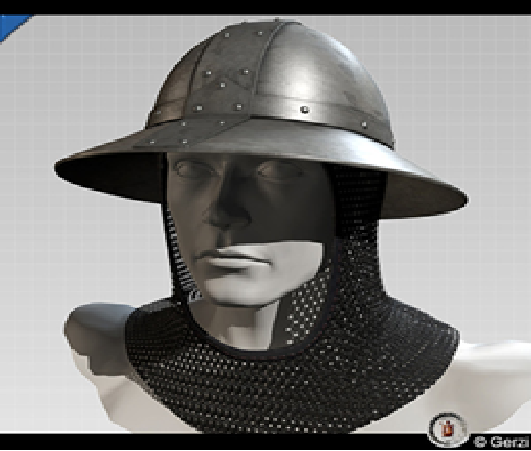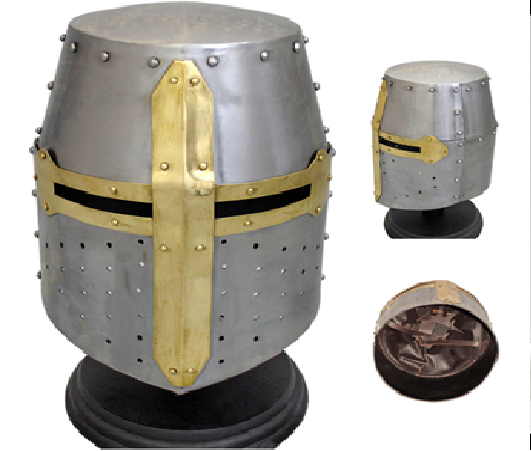

Crusades
The Medieval Ages covers more than 700 years, spanning from the 5th century to the 15th century in Europe. Throughout this period, armors were prominent because of the many wars and skirmishes in Europe. Armors were therefore constantly used by soldiers to defend themselves from weapons like the sword, arrows, axe, mace, or lance. As these weapons enhanced in quality, the armor must also improve in order to protect the wearer.
HELMETS |
|
 Kettle Helmet |
Origin: 1000s Weight: 2.7 kg These helmets were simple conical or spherical helmets, usually made of two or more sheets of metal, which had a broad brim running around the circumference of the helmet, as seen in Figure 20. These sheets of metal would be heated and hammered by the medieval armorsmith and would be riveted together by thin, long rectangular sheets of metal. The brim of the kettle helmet would either be made to be horizontal or would be given a downward slope, which would provide the wearer protection from blows delivered to the head. These blows could involve a multitude of sources including, but not limited to, sword blows, maces, hammers, arrows and also from projectiles aimed from above, such as rocks and boulders dropped on foot soldiers |
 Great Helm |
Origin: 1200s Weight: 1.5-3 kg The final evolution of this type of helmet, seen around the year 1220, was completed by the increase in size of the helmet, as it encased the wearers head and provided protection to all the vital points of the head. These Great Helms, as they came to be known, were cylindrical in form, normally long enough to reach the shoulders, usually flat at the top, and typically placed over a chainmail coif. Vision bars or slits, called vues or sights, were more professionally pierced to allow for a limited line of sight and small holes were drilled below the sights to allow the knight ventilation, much like the earlier version. Depending on where the helmet was made a great helm would either be held in place by both the mail coif and arming cap worn by the knight, or the helmet might have some type of leather strap attachment that would allow the knight fasten his helmet in preparation for the coming battle. Pitted against a War Sword in honorable combat, the Great Helm took its advantages in not having a large amount of neck area exposed for a killing blow, while also shielding the face. |


Integrative Materials Design Center - Worcester Polytechnic Institute